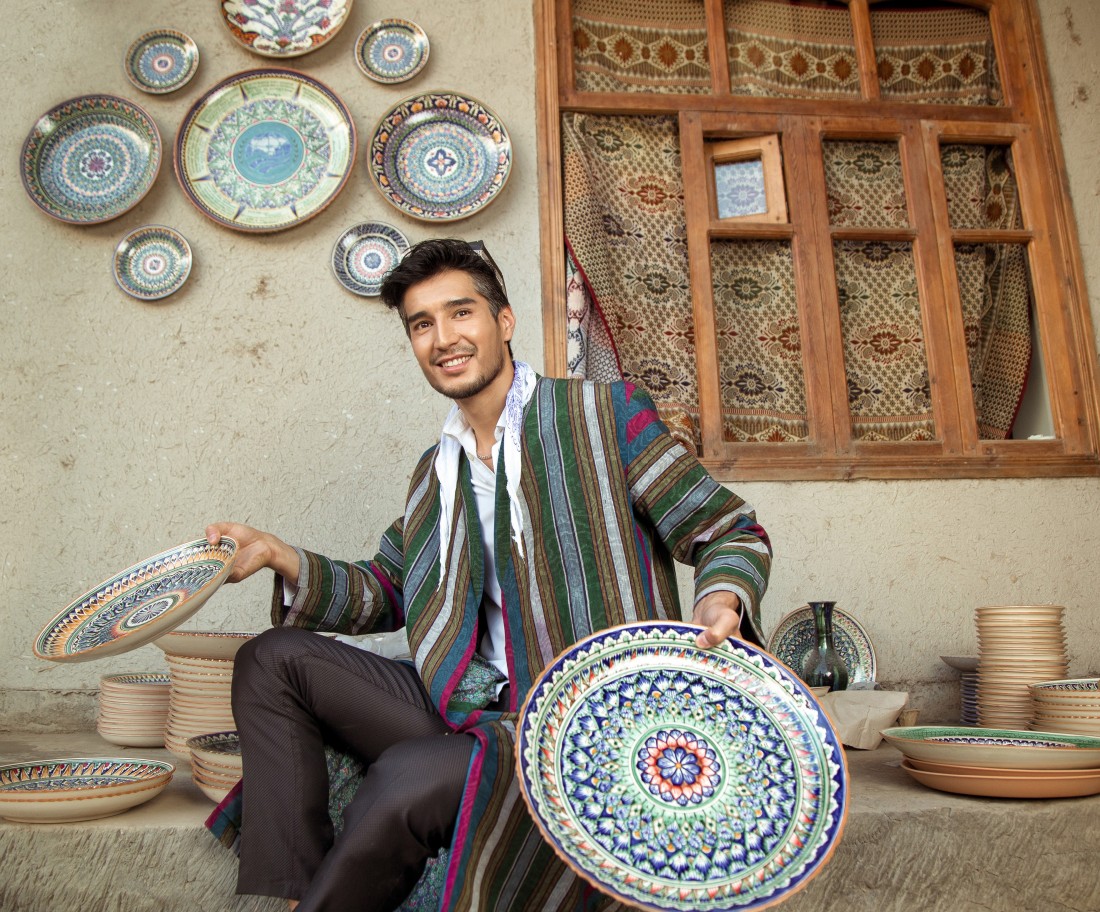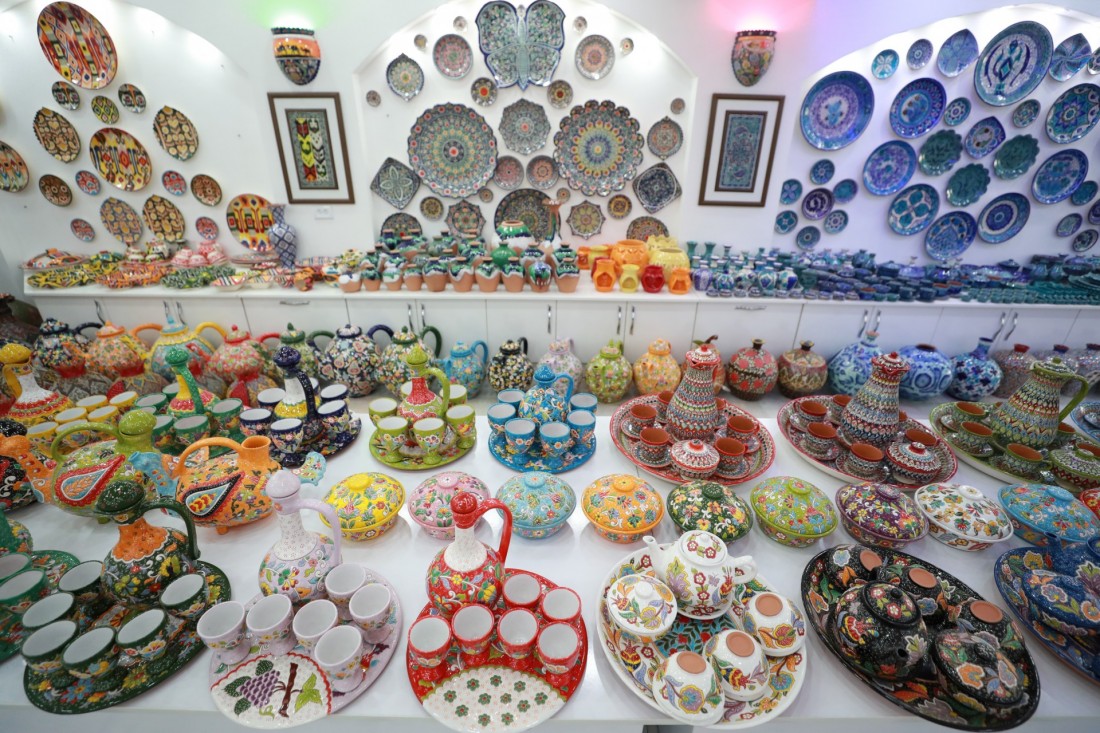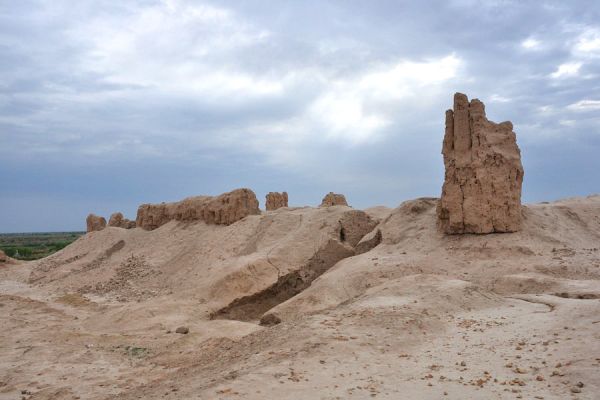Ceramics Center in Rishtan
Everything in Rishtan breathes history. She's everywhere. It has been preserved in the names of old streets and craft quarters: Dukchion mahalla – "spindle quarter", Kuloloni Bolo mahalla – "upper pottery quarter", Kuzagaron mahalla – "potters quarter", Chinnigaron mahalla – "porcelain masters quarter". He lives in the houses of the Rishtans, where his grandfather's tools and century–old humas are kept - huge vessels for grain. Rishtan is located fifty kilometers southeast of Kokand. Back at the beginning of our era, caravan trails passed through here, connecting this small town with the routes of the Great Silk Road that ran through the ancient cities of Ferghana – Kuva and Aksikent.
Pottery industry appeared in Rishtan about a thousand years ago. Lead glazes have long been painted in many regions of Uzbekistan, but ceramic products by Rishtan kuzagar craftsmen, covered with a bright blue ishkor glaze, were in great demand throughout the Great Silk Road – from China to the Arabian Peninsula.
In the early Middle Ages, Chinese porcelain painted with cobalt was popular and highly appreciated in Central Asia. At the end of the 14th century, on the instructions of Amir Temur, several craftsmen from Samarkand were sent to Rishtan with the task of unraveling the secret of the production of Chinese precious porcelain. But there were no deposits of kaolin clay in the Ferghana Valley, and porcelain making could not be adjusted. But the so-called semi-faience, that is, kashin silicate shard, began to be produced from local clays. Dishes made from it, covered with white glaze with blue and turquoise paintings, began to be called "chini", that is, Chinese. Back in the 19th century, the potters of Rishtan made chini ceramics, which were in great demand. After all, according to ancient beliefs, the blue-blue color of water and sky symbolizes happiness. It is known that the masters of Rishtan also made tiles to decorate the palace of Khudoyar Khan in Kokand.
For Rishtane, pottery is a family business. From generation to generation, from father to son, the secrets of making dark purple and brown dyes from manganese ore, which is mined here in the foothills, yellow from iron and chromium oxide, turquoise and ultramarine paints from lapis lazuli, which are used by local craftsmen to paint ceramics. But the main secret of the Rishtans' skill is the formulation of potash ishkor glaze from the ashes of herbs kirk bugin and choroinak, growing in the vicinity of the city. The process of making ishkor is complicated and time-consuming. It is necessary to know exactly the time of collecting herbs, to dry them correctly, to observe the regime of their decay during combustion, to clean the ash from impurities and add white sand in the right proportions. The mixture is annealed twice in the furnace of a pottery kiln.
Ceramic products are coated with angob, a white clay dye, and a pattern is applied on top of it. Ishkor glaze acquires luster and strength after only one firing at a temperature of about 1000 degrees. In earlier times, Rishtan craftsmen used special types of soot-free wood for kindling stoves, mainly saxaul or tal. Modern Rishtan furnaces have gas burners. It is ishkor that gives ceramics an amazing deep and juicy emerald turquoise color.
Even after the termination of the Great Silk Road, the fame of the Rishtan masters has not faded. In 1900, Rishtan products were exhibited at the World's Fair in Paris, where experts compared them with the best European examples of majolica. The works of the masters of that time were included in the museum collections of many countries. The ceramics of Rishtan became the subject of research by art historians and historians, who declared Rishtan the cradle of ceramic art of the entire Fergana Valley.
The variety of shapes and decorations of Rishtan pottery is amazing. These are traditional pilaf dishes, bowls, various bowls, jugs for water and milk, huge food storage tanks. The vessels in the form of an obbasta-urdak duck are particularly interesting. The favorite ornamental motifs of rishtans for decorating ceramic products are floral ornaments, rosettes, images of fish, almond fruits, kumgan vessels surrounded by a meander, checkerboard and mesh patterns. The master applies them with a homemade goat hair brush with quick, precise movements.
Today, about fifty ceramicists work in Rishtan. Each of them has a workshop where they work and immediately sell their products. The names of the father and son of usto Sharofiddin and Firdavs Yusupov, the son of the famous master of usto Ibrahim Kamilov Ismoiljon, Muzaffar Saidov and Rustam Usmanov are well known in Uzbekistan. Their art gives new life to the ancient traditions of Rishtan pottery.













